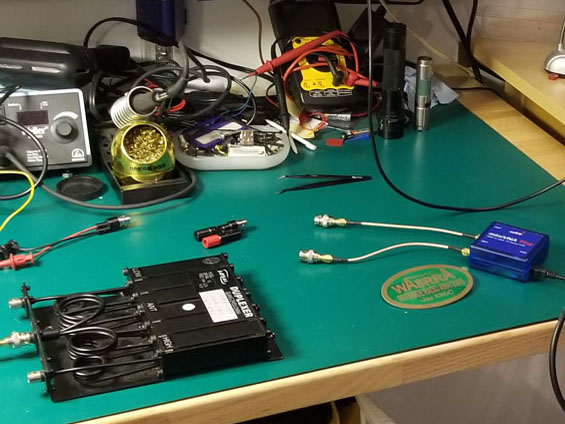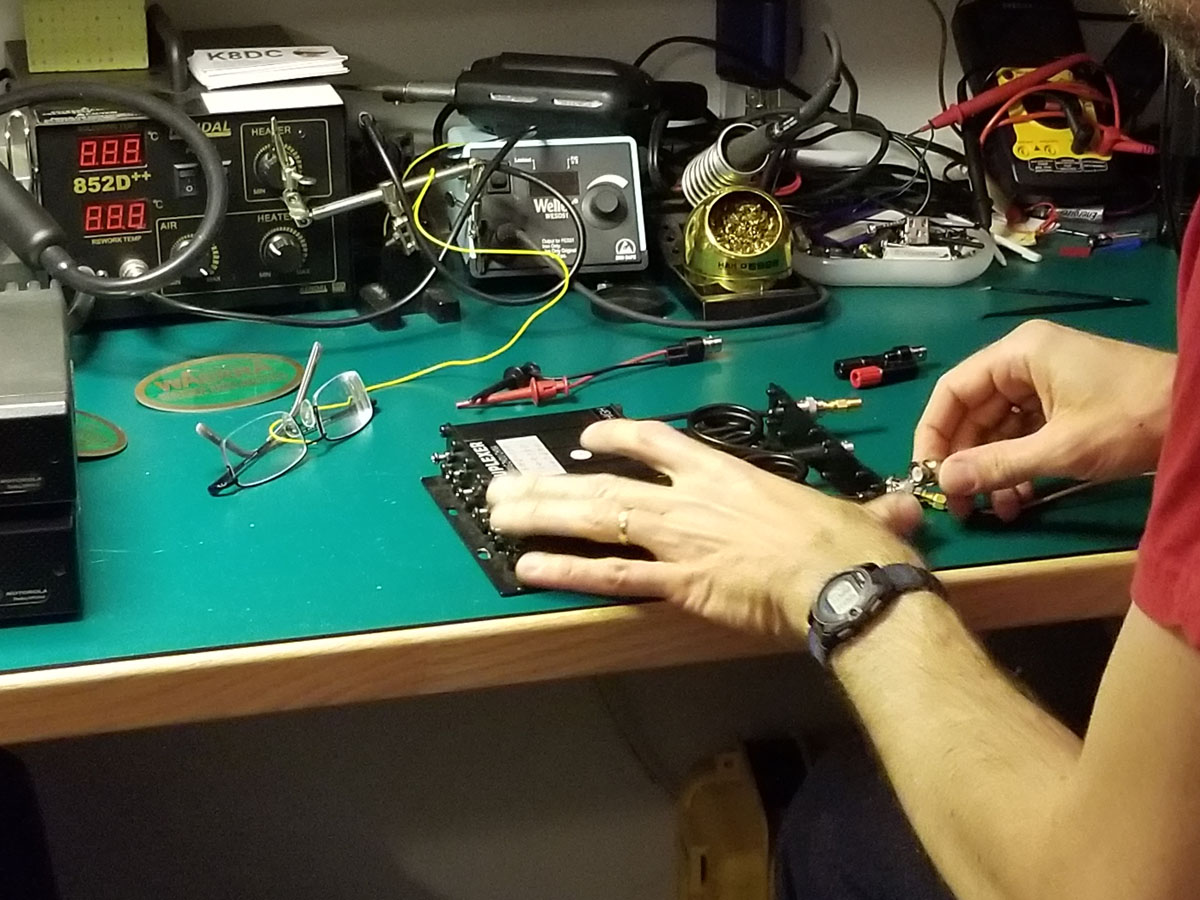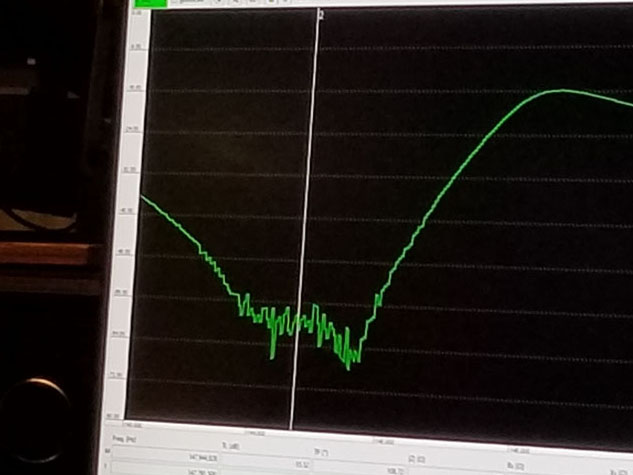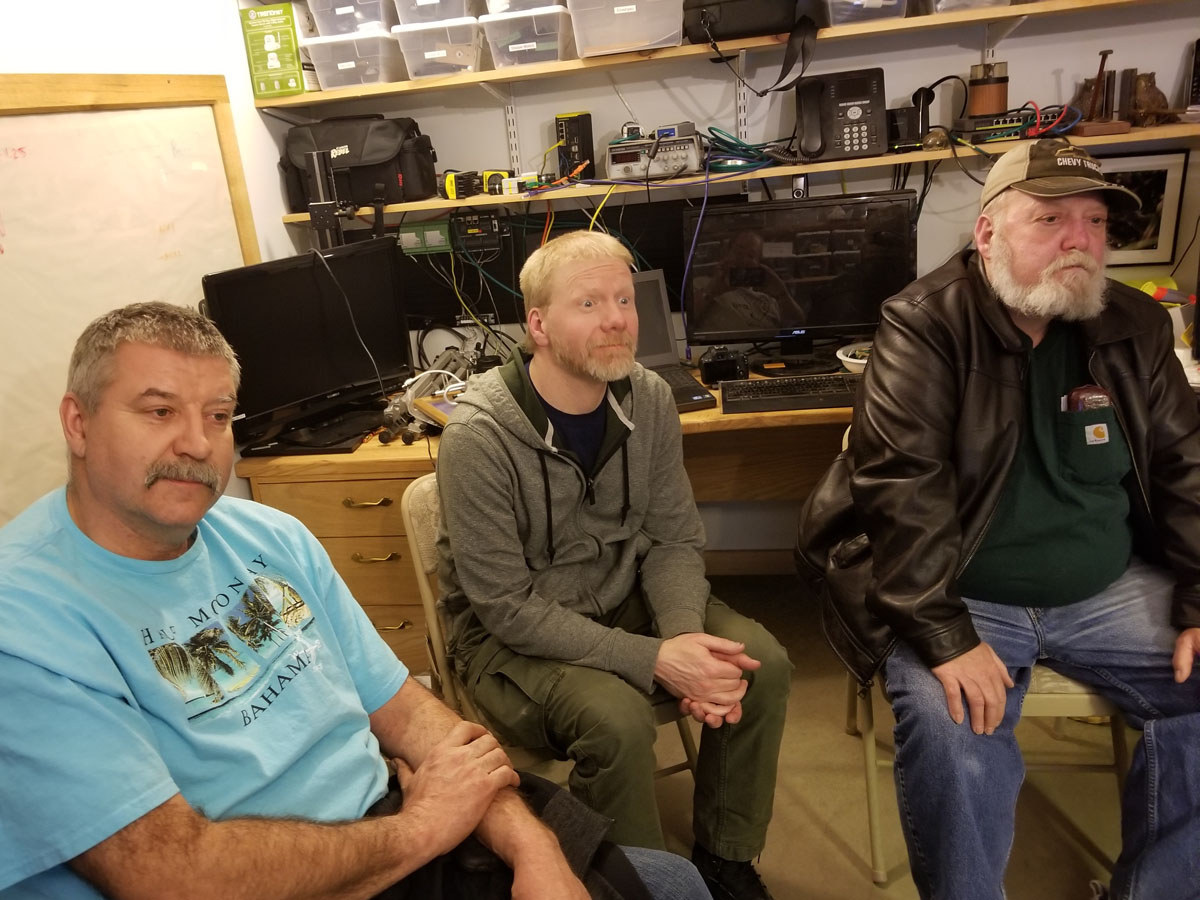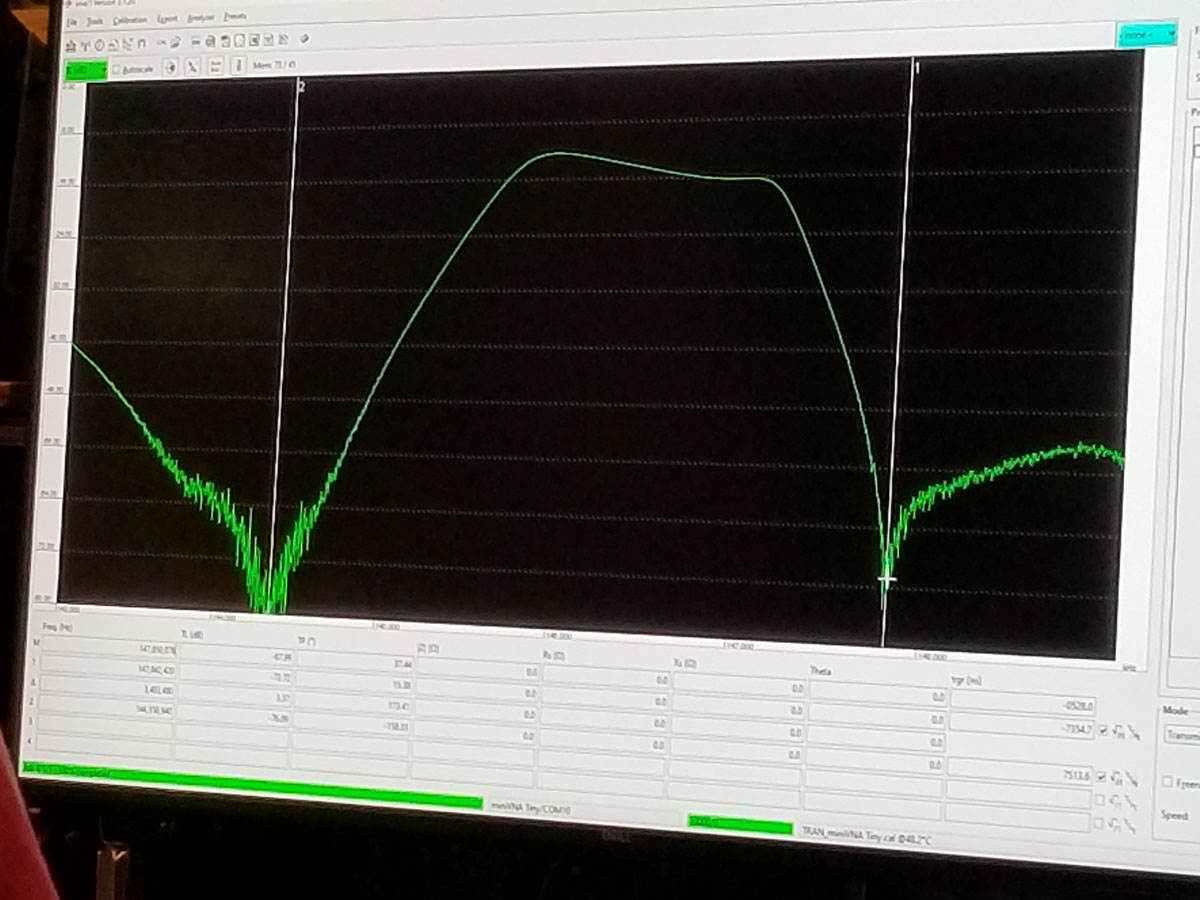After the club meeting on Tuesday March 13, 2018 we moved to Jay K8DC’s lab in order to analyze and tune Mike N8MRC’s mobile duplexer. We used a MiniVNA Tiny vector network analyzer to measure the duplexer’s frequency response.
The DUT (transmit) port of the analyzer was connected to the low-pass side of the duplexer on which the repeater will transmit, while the DET (receive) port was connected to the high-pass side on which the repeater receives. A 50-ohm dummy load was connected to the antenna terminal in the center.
The duplexer was purchased some time ago “pre-tuned” for the frequencies of Mike’s portable repeater but the frequency response showed relatively poor tuning of the cavity filters and an isolation of only about 55 dB.
Attendees were fascinated to watch Jay turning duplexer screws for what seemed like an eternity in order to optimize the resonant frequencies of the cavities. Shown here are Gene AB8KP, Robert KD8TOV, and Raymond KE8IUH. If you look very closely you can also see Mike N8MRC.
After a lot of trial and error, the final frequency response showed sharply-defined notches centered on the transmit and receive frequencies of the repeater. The attenuation was about 65 dB, which is a 10 dB improvement from where we started. This should reduce unwanted signal coupling from the transmitter to the receiver by about a factor of 10.

